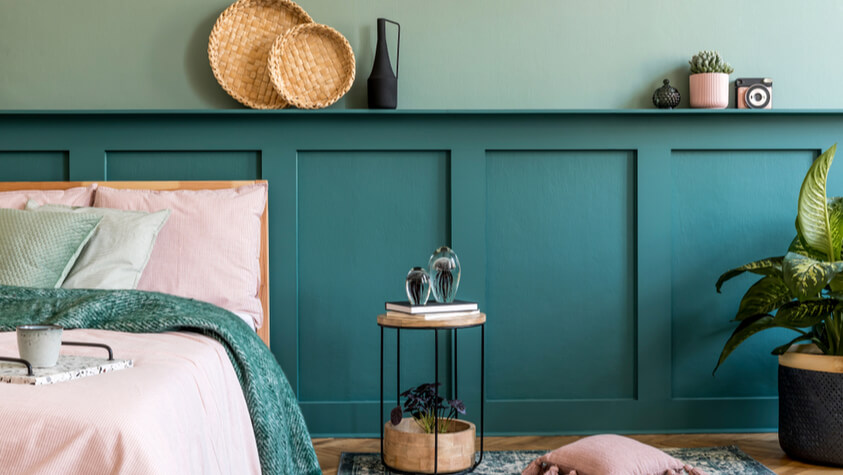By TACP Staff on July 02, 2021

Home staging is the art of styling a personal living space in a way that is attractive to buyers and demonstrates the best use of interior space. Specialists in home staging work in a variety of industries including real estate, marketing, and commercial advertising to present a property in the most appealing way possible.
Perfectly arranged houses are not usually the norm. This is not necessarily the case when it comes to houses up for sale or rent. In these homes, the furniture is typically in pristine condition and painstakingly placed. Not a speck of dust can be seen in these homes, and clutter is carefully stowed away, out of site. There are also usually several little touches throughout the home, like fresh cut flowers or even the smell of apple pie, that help make them more than mere architectural structures. These small touches often help make any space feel cozy and inviting, like home.
These little details are not an accident, nor are they usually representative of the average home. They are also not typically the product of perfect housekeepers. Instead, these homes on the market are usually staged to ensure that every aspect of them is appealing.
Home staging is the practice of preparing a piece of residential property for sale or rent. The entire purpose of home staging is to make the residence appear as attractive and appealing as possible to prospective buyers. The purpose of home staging is simple – homes that are staged sell faster than homes that aren’t, on average. Some studies have shown that staged homes also sell for more than unstaged homes.
The first task of a professional home stager is to inspect and analyze the residence up for sale. In doing so, she will then be able to recognize any unattractive and unappealing aspects of the property.
A home stager will then usually advise the seller on how to improve the property. A home stager will usually attempt to correct the necessary and most obvious problems first. This may include things like cleaning and landscaping. Carpets are shampooed, surfaces are wiped clean, clutter is eliminated, the grass is mowed, and hedges are trimmed. Any necessary repairs and maintenance will also usually be done as well.This may include little things like repairing peeling wallpaper and repainting, as well as larger jobs, such as patching holes in the wall or replacing the carpeting.
After the most obvious issues are taken care of, a home stager will then usually begin working on decorating the residence. Furniture is often meticulously and carefully placed in order to maximize space. A home stager will also pay particular attention to the flow of traffic in a room when placing furniture as well. Other small touches are usually added last. This includes decorations like artwork and fresh cut flowers.
When showing a residence to possible buyers, it is often the little details that will reel them in at the end. There are a number of little tricks that a home stager can use to make a residence feel warm, cozy, and inviting. Many home stagers use potential buyers’ senses of smell to their advantage, for instance. They will introduce inviting and homey scents to a residence before a showing. This can include the use of air fresheners and candles, or even a fresh pie baking in the oven.
Technically, there are no formal education requirements for starting a home staging career. However, a sound understanding of what aspects make a home appealing is very important in this career path. Because of this, those interested in home staging careers should consider some type of formal training.
Specific courses and certificate programs are also available for those interested in home staging careers. These programs typically take anywhere from a few days to a few weeks to complete. Instead of just taking these basic courses, however, serious home planners may want to consider earning college degrees.
Interior design degree programs will often help students learn the fundamentals of interior design and decorating. This will often include courses in color schemes, furniture placement, window treatments, and basic home design. Some home stagers might also work to sell real estate as well as preparing homes for showings. This usually requires an additional real estate degree, along with a real estate license.
Learn More: Interior Design Schools
Salaries of different home stagers will often vary, depending on each professional’s skills and experience. The location also plays a role in how much these professionals make as well. The Bureau of Labor Statistics does not record specific salary data, which makes determining the possible salaries of these professionals even more difficult. The BLS, however, does collect salary data from some other related professions. Interior designers, for instance, made an average salary of $51,500 in 2017. Real estate sales agents made $52,490 in that same year. Learn more about Interior Designer Careers.
Home stagers are often able to find employment in a number of different areas. Some home stagers, for instance, might work for large real estate agencies, staging homes before showings and open houses. Home construction companies and modular home manufacturers might also work with home stagers, who are responsible for setting up and decorating newly constructed and modular homes for interested buyers to look at. A home stager also has the option of setting up her own business, especially after she has gained some experience and added to her list of clients.
Consider these related careers in Applied Arts.

The Art Career Project is a trusted resource for emerging and professional artists.